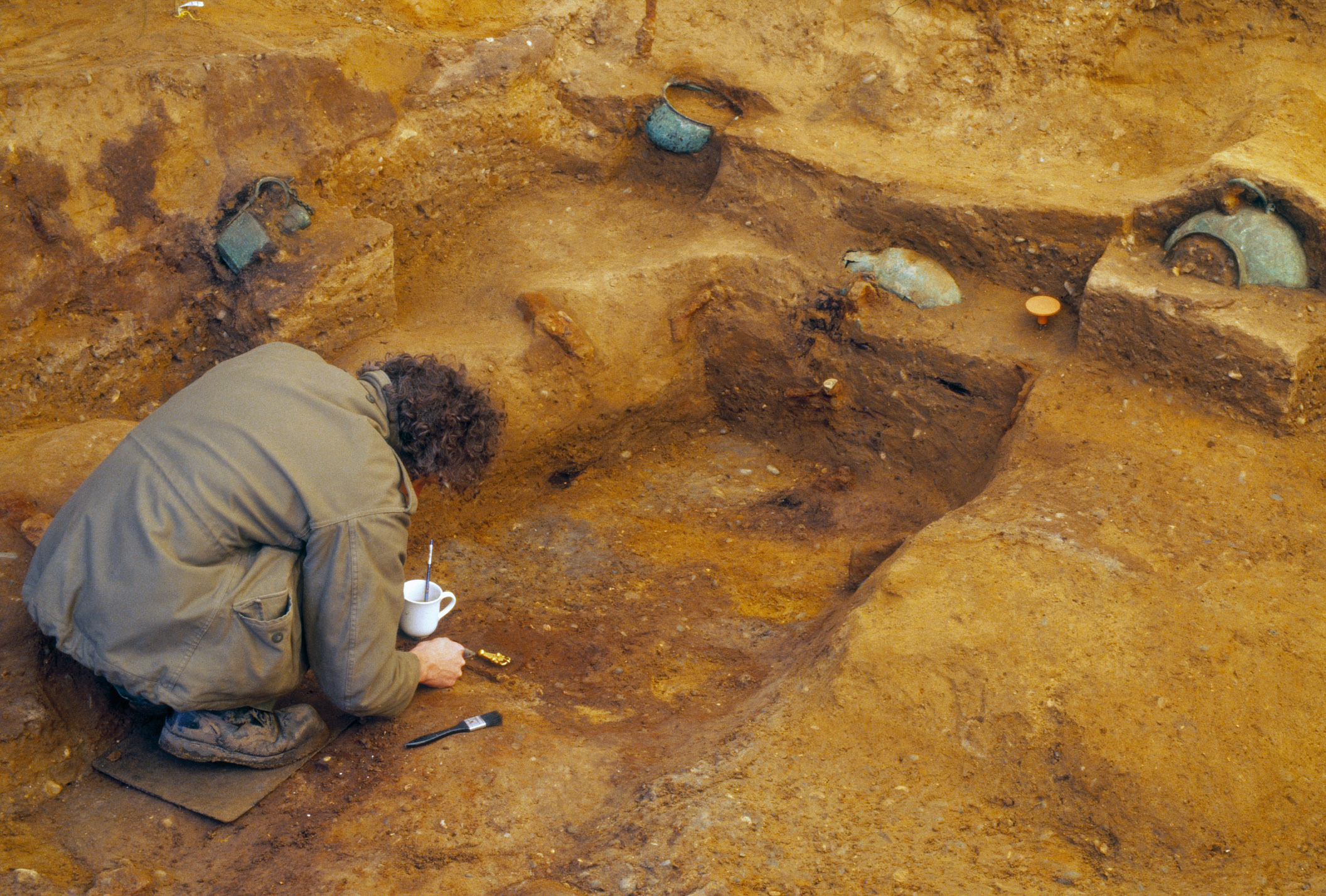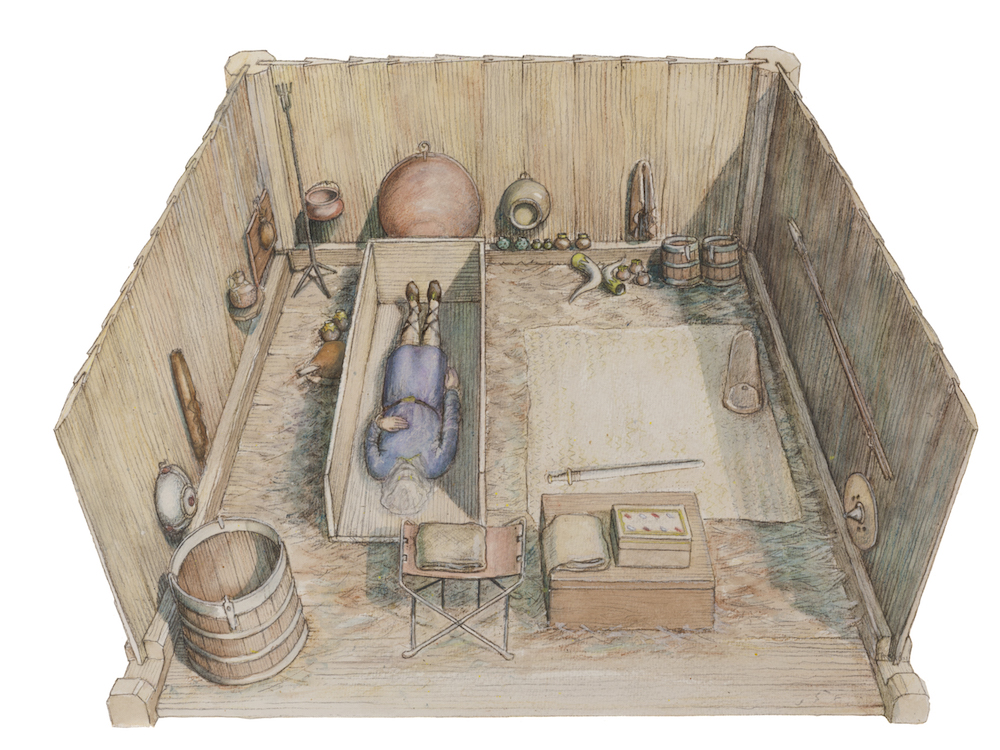This Is the Earliest Known Christian Burial in England. It's Finally Revealing Its Secrets.

The tomb of an Anglo-Saxon prince has revealed treasures such as a decorated lyre, painted woodwork and a gold belt buckle. The treasure-laden tomb is the first known Christian burial of an Anglo-Saxon.
The tomb dates back about 1,400 years and can be explored virtually. The identity of the man buried in the tomb is unknown. Archaeologists believe he may have been a relative of King Saebert, the first known East Saxon king to have converted to Christianity, who died in A.D. 616. Regardless of the man's identity, his grave goods indicate that he was aristocratic. [In Photos: Stunning Treasures from the Burial of an Anglo-Saxon Prince]
"The range of exquisite objects discovered here, now around 1,400 years old and some of them representing the only surviving examples of their kind, are giving us an extraordinary insight into early Anglo-Saxon craftsmanship and culture," Duncan Wilson, the chief executive of Historic England, the agency tasked with preserving cultural sites around England, said in a statement.
A Christian prince
Historic England helped fund research into the tomb, which was discovered in 2003 near Prittlewell, Essex. The excavations, led by the Museum of London Archaeology (MOLA), gradually revealed an elaborate burial chamber. The centerpoint was an ash-wood coffin with iron fittings, of which only the metal pieces and a few wood fragments still survive. Little is left of the deceased beyond a few fragments of tooth enamel, which revealed only that the person buried in the tomb was older than age 6. However, the size of the coffin and the placement of belt buckles and other metallic fittings on the deceased's clothing put his height at about 5 feet 8 inches (1.73 meters) tall. From that height and the type of objects found around the coffin, archaeologists gauge that the tomb was built for an adolescent or adult man.
Near the head of the coffin, archaeologists found two thin gold-foil crosses, which were likely placed over the eyes of the dead man, indicating his Christianity. A triangular belt buckle made of gold would have fastened a belt around the man's waist. Two gold coins were found where the corpse's hands would have been, suggesting the man was buried clutching one in each hand.
At the head of the coffin, archaeologists found the remnants of a folding iron stool, which may have been a "gifstol," a seat from which a ruler would dispense rewards or rest while settling disputes among his followers. At the foot of the coffin was a cauldron 2 feet (0.6 m) in diameter.

Worldly riches
Other items placed around the chamber included drinking horns, cups, bottles, buckets and beautiful blue glass beakers. A copper-alloy flagon was decorated with medallions bearing the image of St. Sergius, a fourth-century Roman Christian soldier said to have been martyred for his faith. The flagon, a basin and a silver spoon all came from the Eastern Mediterranean, according to MOLA, and garnets found in the tomb came from India, indicating wide-ranging trade in this era.
Sign up for the Live Science daily newsletter now
Get the world’s most fascinating discoveries delivered straight to your inbox.
A horn-handled sword in a leather-and-wood scabbard marked the tomb's occupant as male and wealthy. A shield, two spears and an arrow were hung on the tomb's south wall. Finally, researchers found the first ever complete remains of an Anglo-Saxon lyre. The instrument had mostly decayed, but stains on the soil revealed its shape and held chemical traces that showed the lyre to be made of maple. The lyre had once split but been repaired with iron, silver and gilded copper-alloy fittings.
Many of the artifacts are going on display at Southend Central Museum in Southend-on-Sea, England, on Saturday (May 11). The Southend-on-Sea Borough Council co-funded the excavations and research.
“The long-awaited return of the Prittlewell princely burial collection is a hugely exciting and significant moment for Southend Museums Service and the town,” museum curatorial manager Ciara Phipps said in the statement. “The finds, now on permanent display at Southend Central Museum, highlight the richness of this community’s heritage and have deepened our understanding of the Anglo-Saxon Kingdom of Essex.”
- Mysterious New Henge in England (Photos)
- The 25 Most Mysterious Archaeological Finds on Earth
- Photos: Cropmarks Reveal Traces of Lost Civilizations in England
Originally published on Live Science.

Stephanie Pappas is a contributing writer for Live Science, covering topics ranging from geoscience to archaeology to the human brain and behavior. She was previously a senior writer for Live Science but is now a freelancer based in Denver, Colorado, and regularly contributes to Scientific American and The Monitor, the monthly magazine of the American Psychological Association. Stephanie received a bachelor's degree in psychology from the University of South Carolina and a graduate certificate in science communication from the University of California, Santa Cruz.









